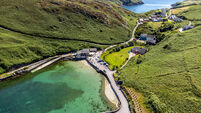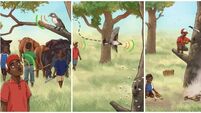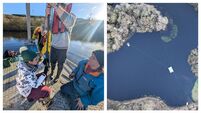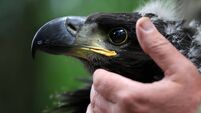Islands of Ireland: Only sheep or local boatmen have easy access to Kerry's Two-Headed Island
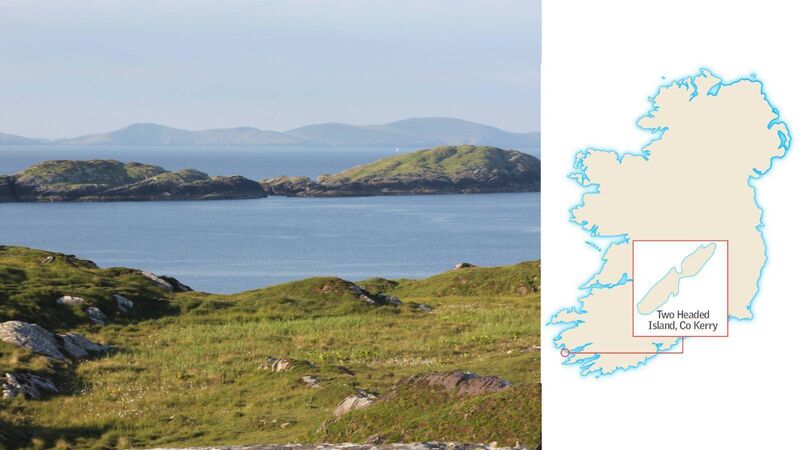
Islands of Ireland: Two Headed Island, Kerry is in Derrynane Bay on the Iveragh Peninsula
Though it is tempting to imagine that this County Kerry island was named after some ferocious creature from the deep such as the mythological Kraken, the answer is much more prosaic. Its name derives (in Irish Oileán Dá Cheann) from its double morphology which gives it the appearance of two heads.
As with Long Island in Roaringwater Bay, West Cork, Two-Headed Island is so named for its appearance, though in scrutinising this island from up close and distantly from Coomakista Pass on the Iveragh Peninsula, Two-Bodied Island might have been more appropriate.
It is a next-door neighbour to Moylaun Island and together they lie just off Lamb’s Head in the magnificent spot that is Derrynane Bay on the Iveragh Peninsula. The bay is flanked on one side by Lamb’s Head and the other by Abbey Island, burial place of Daniel O’Connell’s wife, Mary.
The pair have a few near fellow islands in the Isky Islands, Leaghcarrig Island and Lackrane Island all of which are too small to merit a larger exploration here, alas.
Both Moylaun Island and Two-Headed Island are inhospitable places with very difficult landings for kayakers. Sheep are still ushered up onto the islands courtesy of the amazing dexterity and ingenuity of the boatmen who know the precise landings and when the time is right to send the animals scurrying up the steep slopes.
Here and there the sheer walls dip down to sea level but with a surging sea, landing is indeed very difficult.

Its lumpy 22 acres reveal a surprising couple of meadows which, were you able to take your mind off the precarious location, might make for a pleasant sojourn. A raised storm beach is a surprising find and along with some freshwater pools provides a topographical variation.
However, this is no place to tarry and if you have landed there be grateful to the weather gods for their beneficence because their mood can change in an instant. A sizeable inlet on the northern side is about the only respite from these difficult seas.
The other two-something island in Ireland is Two Point Island in Dunmanus Bay in West Cork, but surprisingly the construction appears nowhere else.
Two-Headed Island is popular with divers who are attracted to its waters and a lovely cave on the southeast side, where divers can probe to 20m deep. In fact, much of the coastline along here appeals to divers attracted by quiet harbours and revelatory depths.
Two-Headed and Moylaun are unpopulated — they were never populated, but in the 1970s someone sought planning permission for the construction of a holiday home on each island. The ‘developments’ did not materialise.
While Two-Headed Island has no recorded archaeological monuments, and they are possibly yet to be discovered, it has nonetheless had a role in alignments of monuments with natural features. A survey of prehistoric monuments on the southwest coast found astronomical significance in the island with some monuments along the coast.
The authors of a report found “many of the short rows of standing stones found in this region appear to be orientated upon the southerly limit of the rising or setting moon”. This observation was in reference to Scotland but the author found southwest Ireland was an important comparator.
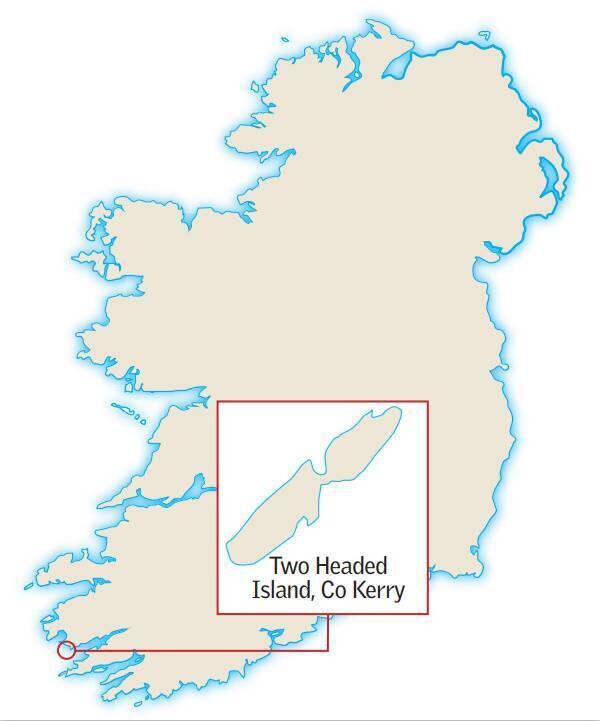
And further, that the monuments “despite their diversity in form demonstrate a quite remarkable overall consistency in orientation”. That is, northeast to southwest. In the case of Two-Headed Island it appears the two standing stones (formerly four) inland from Caherdaniel at Garrough were aligned with a point beyond the highest point on the island of 28m.
The research indicates that this is the case with most of these monuments: alignment with a distant hill. It is no Newgrange of course, but it does offer a fascinating glimpse into the building of monuments relative to the lunar and solar cycles.
: Inquire with skelligcoastdiscovery.com or kayak from a pier at Bunavalla, 3km southwest of Derrynane. Privately owned.
: , Clive N Ruggles; , Vol 25, S1, 1994;
logainm.ie



